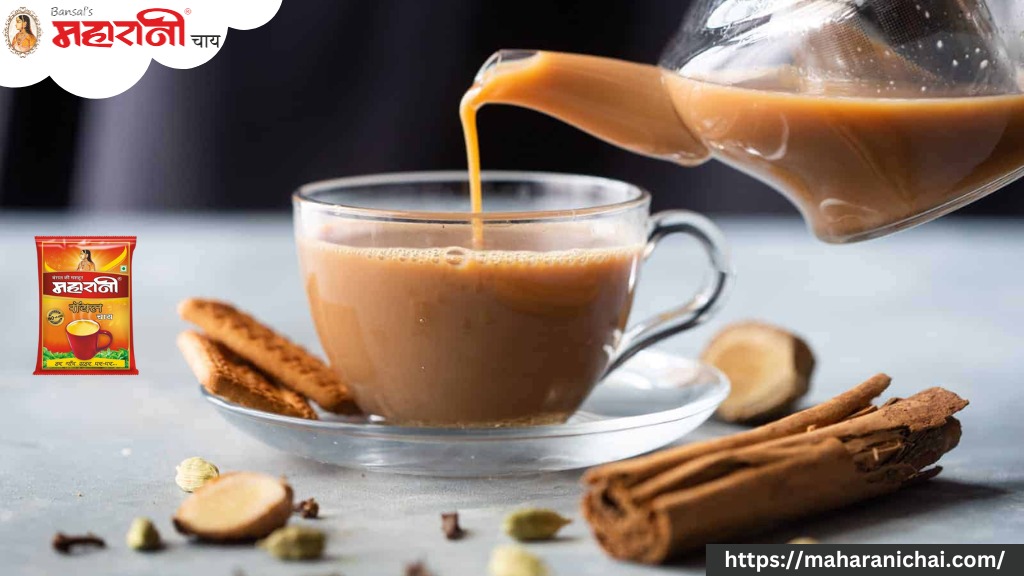Black tea and aromatic spices are traditionally used to make masala chai. This tea’s warm, consoling flavor and stimulating fragrance make it number one. It contains cardamom, cinnamon, ginger, cloves, and dark pepper. A variation may also include other ingredients besides star anise and fennel seeds. Masala chai or special chai is made by dipping spices in water and mixing them with milk sugar or honey. India is known for its delicious concoctions and warm hospitality.
Characteristics of Darjeeling Leaf Tea
Darjeeling leaf tea is a premium black tea renowned for its exquisite flavor, delicate aroma, and distinct character. The fine nature of this tea is due to its uncommon terroir, found in the pleasant Darjeeling locale of West Bengal, India.
Here are some key characteristics of Darjeeling leaf tea:
- Flavor Profile: Darjeeling leaf tea offers a complex flavor profile with floral, muscatel, and fruity notes. Darjeeling tea may also exhibit nuances of almond, citrus, honey, or muscat grapes according to the season.
- Climate and soil: Darjeeling’s high altitude, cool, misty climate, and fertile soil are ideal for tea growing. Geographical and environmental factors contribute to the unique taste and aroma of tea.
- Flushes: Different flushes of Darjeeling leaf tea have distinct flavors. In the spring, this tea produces light, delicate teas with floral and green notes. Late spring to early summer yields teas with fuller bodies, muscatel flavors, and subtle sweetness. In the fall, the autumn flush produces robust, earthy teas with strong aromas.
- Appearance: Darjeeling tea has long, wiry leaves and often golden or silver tips. These features contribute to its smooth and mellow flavor.
- Brewing: Darjeeling leaf tea is best brewed using freshly boiled water at 195-205°F (90-96°C). You should steep the tea for 3-4 minutes for the first and second flushes and 4-5 minutes for the autumn flushes.
- Versatility: Darjeeling leaf tea can be processed into black, green, white, or oolong teas. Tea enthusiasts have many options to explore.
- Prestige: A world-class tea, Darjeeling tea is highly regarded among tea connoisseurs. The Indian government has designated the region as a Geographical Indication (GI), ensuring Darjeeling tea’s quality and authenticity.
How to make special Darjeeling tea in Rajasthan
Creating special tea in Rajasthan involves infusing traditional flavors and ingredients native to the region into the tea-making process. Here’s a guide on how to prepare special Darjeeling tea in Rajasthan:
- Select Quality Tea Leaves: Start with high-quality tea leaves for your special tea. While Rajasthan is not known for tea cultivation, you can use premium black tea or Darjeeling leaf tea as a base. Choose whole-leaf teas for maximum flavor and aroma.
- Infused with Local Spices and Herbs: Spices are a hallmark of Rajasthan’s rich culinary heritage. Spice up your tea blend with cardamom, cinnamon, cloves, and black pepper to create a distinct flavor. Mint or holy basil (tulsi) adds freshness and aroma to the dish.
- Add Sweetness: Rajasthani tea often reflects their sweet tooth. Consider adding honey, jaggery, or sugar to your tea to sweeten it. Taste the sweetness and adjust accordingly.
- Include Aromatic Ingredients: Add aromatic ingredients to your tea, like rose petals, saffron, or dried fruits. These ingredients enhance tea flavor and raise sensory perception as a result.
- Experiment with Flavors: Get creative with flavor combinations to create a tea that captures Rajasthan’s essence. Consider blending your tea with spices commonly used in Rajasthani cuisine, such as turmeric, coriander, or cumin, for a delicious and flavorful brew.
- Brewing Method: Pay attention to the brewing method to ensure the perfect cup of tea. Use filtered water and boil it. Steep the tea leaves and spices in hot water for the recommended time to extract the flavors fully. Strain the tea and serve hot.
- Serve with Traditional Snacks: To enhance the special chai experience, serve pakoras (vegetable fritters), mathri (savory crackers), or bikaneri bhujia (spicy fried snack). Combining tea with snacks enhances drinking.
- Presentation: Use kulhad cups or elegant teaware decorated with Rajasthani motifs and patterns to serve hot tea. Make sure your presentation is appealing and inviting to your guests.
Spring brings a fresh floral taste to chai, and winter brings a comforting taste of premium tea in Rajasthan. This collection of seasonal chai recipes lets you indulge in the flavors of the season. With chai aromas all year long, you can enjoy tea time with your loved ones.

